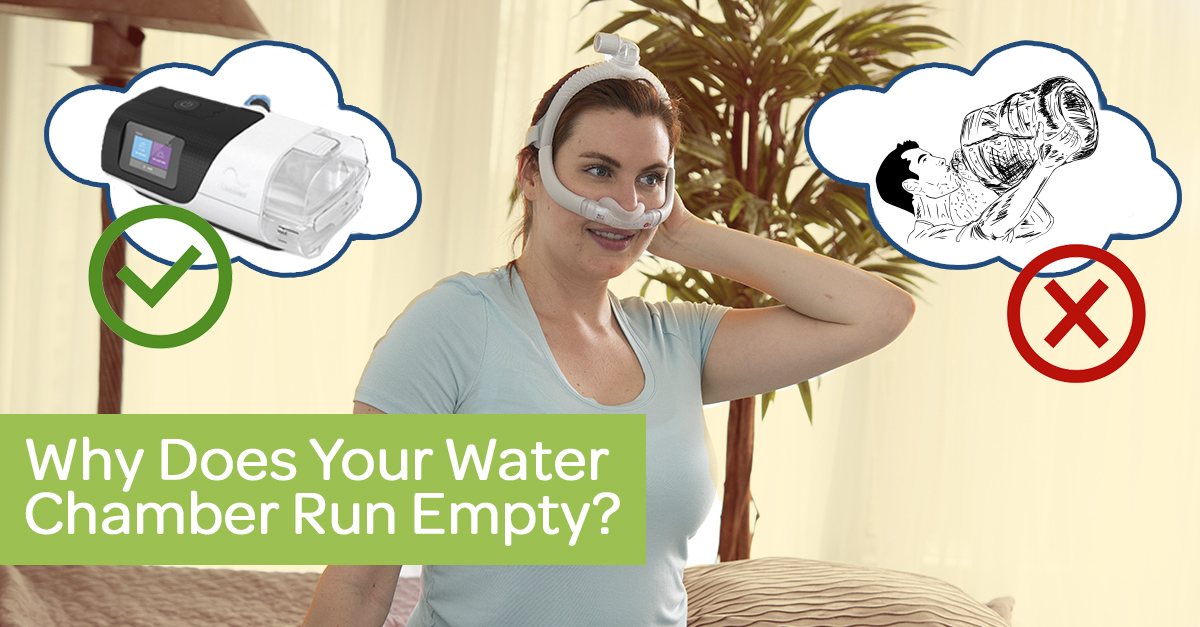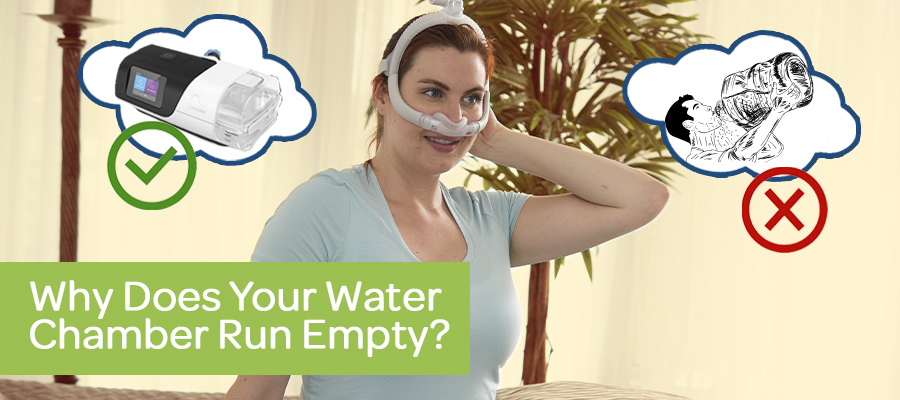
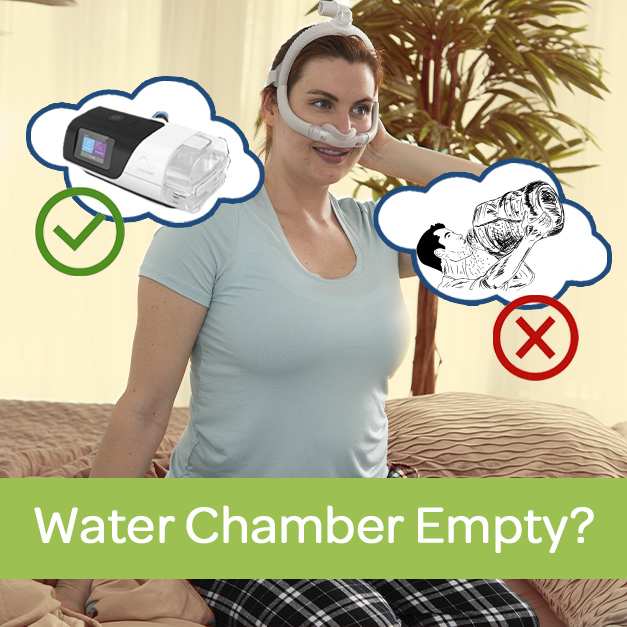
Dryness and discomfort associated with dry mouth are some of the most common issues for CPAP users – and many report it’s due to their humidifier running dry too early in the night. Dry mouth can lead to congestion and soreness, and often leads many people with sleep apnea to resist or abandon treatment. But in a mild climate, your CPAP humidifier likely doesn’t need more than a quarter to half of the tank to last a good 8 hours. So what’s the issue? It’s a little more complicated than a single answer, so we’re going to cover the main reasons why it might happen and how to fix it.
Why might your humidifier run out during the night?
There can be many causes of an empty humidifier on your CPAP, but the most common is therapy leaks. When your mask leaks or your tube leaks, the air escaping draws moisture from the humidifier faster, leaving you without water for your therapy. The other way therapy leaks happen is through your mouth. If you’re using a nasal mask, but your mouth sits open at night, you’ll lose all the moisture that way. Worse, you’ll also lose your CPAP therapy benefits as well!
After mask leaks, the second most common cause of empty water chambers is the climate of the room you sleep in. If you live somewhere temperate where your rooms is consistent through the year, you may not notice a different. But in more seasonal regions, winter means drier air all around, and heating in your house makes it even drier! This will empty your humidifier faster as the dry air passes over the water in the chamber. Conversely, sleeping in a very cold room will lead to the moisture reforming into water droplets throughout the tube. This is called rainout, and will also run your humidifier harder, leading to an empty water chamber sooner.
That’s it right? Sadly, no there’s more. Your water chamber could have hairline cracks leaking water slowly through the night. This one you’d probably notice in the morning pooled around the machine, but if your room is dry enough it’s possible it evaporates before you wake up. And of course, there’s the small possibility your humidifier or CPAP is malfunctioning, and you have an uncommon problem instead of a common one.
Don’t worry—we have a number of solutions to help you deal with emptying humidifiers.
1. Make sure your supplies are up to date.
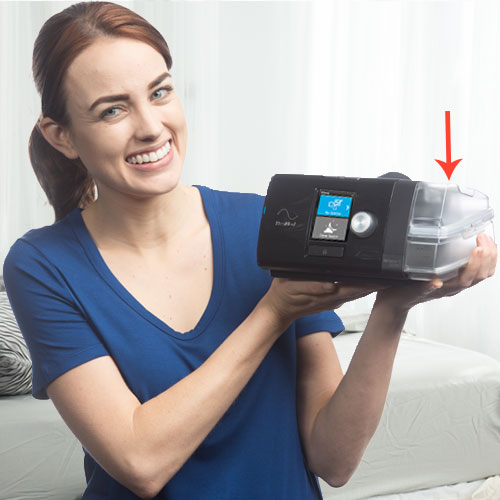

Old supplies can mean an inefficient system prone to leaks and cracks. breakdowns in any part of the system can leak your humidification before reaching your mouth, and humidifiers can get hairline cracks that leak moisture through the night.
These machines are programmed with a sophisticated algorithm that monitors your breathing in order to determine the most comfortable and effective settings for you at any given moment. The constant adjustments of the auto CPAP are essential to ensure that you continue to get the most out of your CPAP therapy.
Your new CPAP with heated humidification could be yours for $0! Allow us to check with your insurance provider for you to find out what is covered (for free!). Click below to get started:
Are your supplies due for a replacement? Check out our standard insurance replacement schedule below:
2. Use an up to date machine with a heated tube.
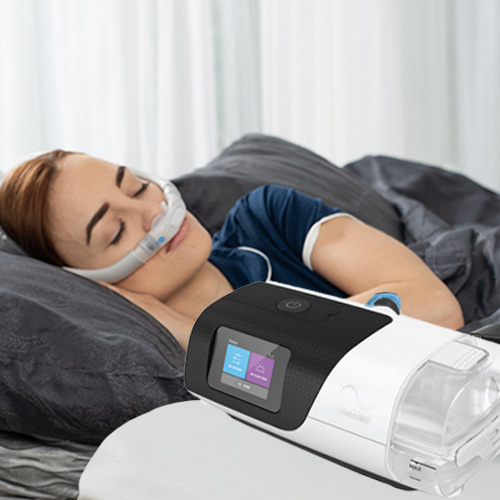

Humidifiers often need changed settings during different seasons. Auto-adjusting machines can fix that without you lifting a finger. The ResMed AirSense 11 Auto CPAP has all of these features to make breathing easy in every climate:
- Humidification: Auto Climate Control setting regulates humidity and temperature to match your needs and environment
- EPR: Expiratory Pressure Relief reduces the pressure when you exhale, avoiding high pressure mask leaks
- AutoRamp: Starts your sleep therapy at a low pressure to ensure you fall asleep comfortably
- Humidification: Auto Climate Control setting regulates humidity and temperature to match your needs and environment
- EPR: Expiratory Pressure Relief reduces the pressure when you exhale, avoiding high pressure mask leaks
- AutoRamp: Starts your sleep therapy at a low pressure to ensure you fall asleep more comfortably
Upgrade to the AirSense today for just $399 down and 0% APR! Just add to cart below.
3. Check for mask leaks.
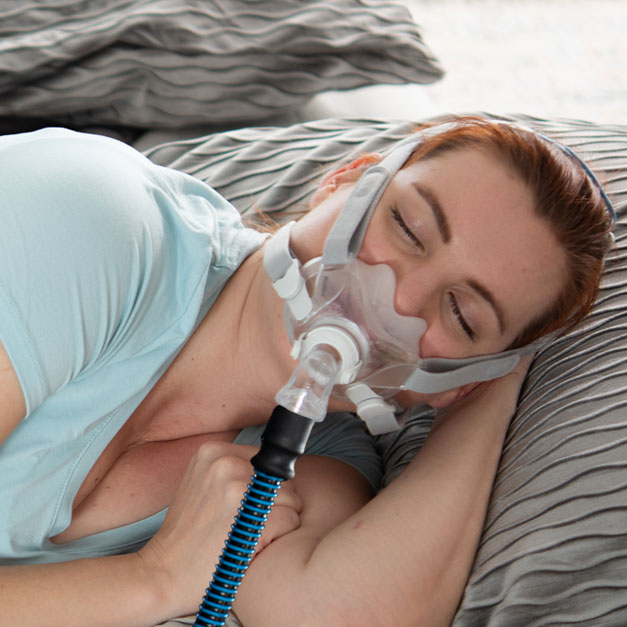

If you’re using a nasal or pillow mask, you may actually need a full face mask instead to fix your humidity problem. If your mouth opens up, the CPAP therapy will escape through your mouth instead of going into your airways. Plus it weakens your CPAP therapy! The best solution is a strong sealing mask like ResMed’s most minimal full face mask, the AirFit F30.
- Under-the-nose full face cushion: Reduces red marks and irritation on the nasal bridge
- QuietAir technology: Makes for a quieter experience for you and your bed partner
- Quick-release elbow and universal headgear: Makes taking your mask on and off easier than ever
- Under-the-nose full face cushion: Reduces red marks and irritation on the nasal bridge
- QuietAir technology: Makes for a quieter experience for you and your bed partner
- Quick-release elbow and universal headgear: Makes taking your mask on and off easier than ever
Save $20 on the AirFit F30 today! Just add your size to cart below and code F30SAVE applies automatically.
4. Adjust your room climate.


If even the auto adjusting humidity controls are running your system dry, you may need to use a heated tube to decrease how much moisture is lost along the way from the humidifier to your mask.
A tube cover may work for non-heated tubes as well, but should not be used with heated tubes. Even so, you may still require a room humidifier to fully solve the problem.
None of the above? Our CPAP Experts are happy to help you figure it out. For a free consultation with a CPAP expert give us a call at (866) 564-2252.
Need a tube cover? Find one here



